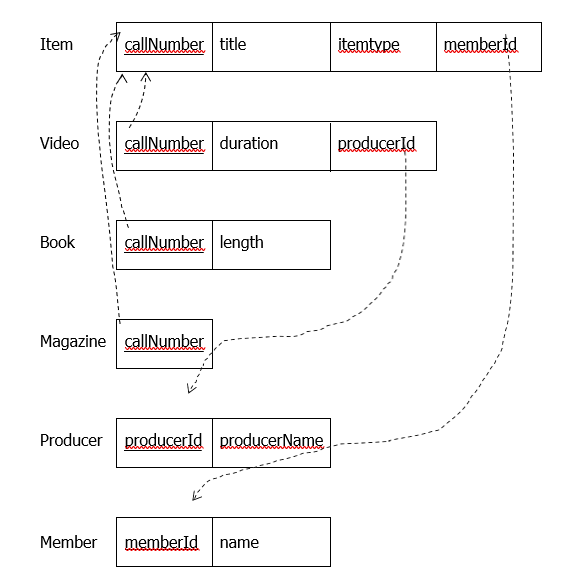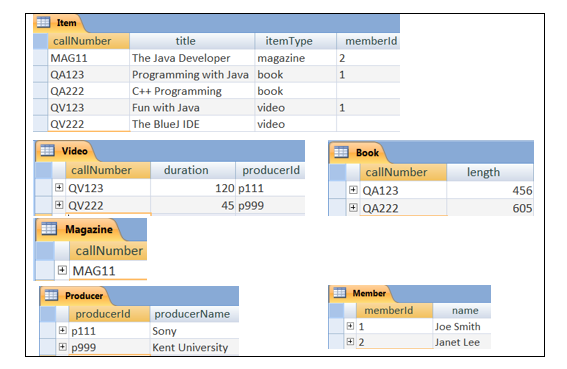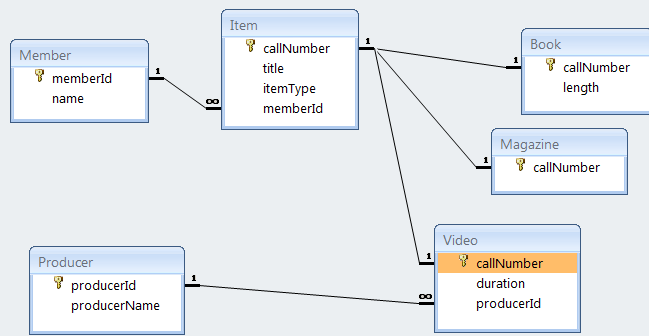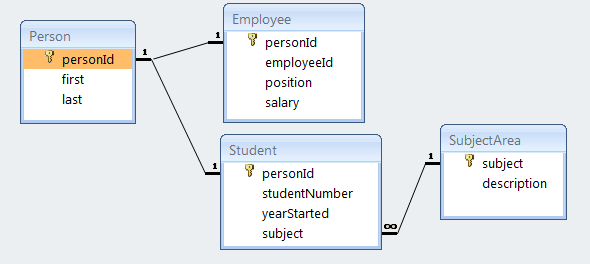APPENDIX B
B.4.1: Relations For All Entity Types
With this option each entity type in a hierarchy is represented by its own relation. Important points here are that
-
-
- All relations representing entity types in the same hierarchy have the same primary key.
- The primary key of a subtype relation will also be a foreign key that references its supertype relation.
- Attributes of a supertype (except for the primary key) appear only in the relation that represents the supertype.
-
Example:
The library model maps to the following relational design:

Note the foreign keys:
-
-
- Item has a foreign key referencing Member
- Video has a foreign key referencing Producer
- Each of Video, Book, and Magazine has a foreign key referencing Item. If a row exists in Video, Book, or Magazine then there must be a corresponding row in Item.
-
A sample database is presented on the next page.
The tables are shown here with sample data. Note that:
-
-
- each row of Video, Book, and Magazine has a related row in Item
- some items are out on loan to a member
- each video has a producer
-

In the relationships diagram note the one-to-one relationships between the supertype relation and each of its subtype relations:

 Example: Now consider the university model. The relational design for this mapping option:
Example: Now consider the university model. The relational design for this mapping option:
-
-
- Since subtyping is optional in the university model there can be a row in Person with no corresponding row in Employee or Student. A person does not have to exist as one of the subtypes.
-
Note the foreign keys:
-
-
- Student has a foreign key referencing SubjectArea
- Employee and Student have foreign keys referencing Person. If a row exists in Employee or Student, then a corresponding row must exist in Person.
-
On the following page we show tables with some sample data and the relationships diagram.
A sample database is presented below. Note that person 2 is both a student and an employee, and that person 4 is neither a student nor an employee.

In the relationships diagram note the relationships are one-to-one between the supertype relation and each of its subtype relations:


